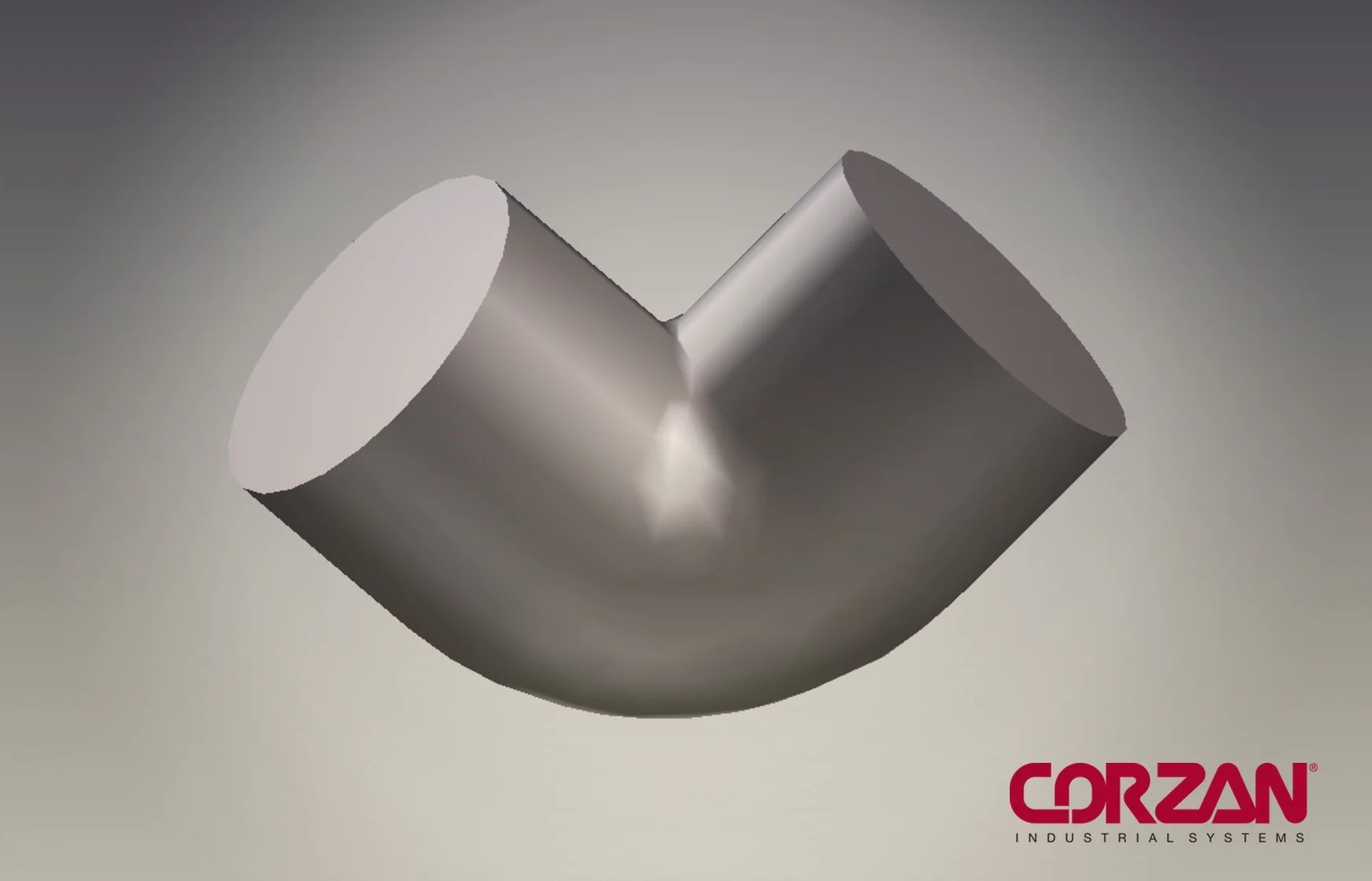CORZAN® CPVC PIPING
THREADING
CORZAN® CPVC PIPING
THREADING
What Piping Can Be Threaded?
Corzan® Schedule 80 pipe up to and including 4 in. in diameter, and at an operating temperature of 130°F (54.4°C) or less, may be threaded. The threads should be in accordance with ANSI B1.20.1 Taper Pipe Thread.
Note that threaded joints are derated to 50% of the pressure rating of the Schedule 80 pipe at the operating temperature. Schedule 40 pipe, Schedule 80 pipe larger than 4 in., or piping that will operate at a temperature greater than 130°F (54.4°C), should not be threaded. Flanges, unions, or Victaulic™ couplings may be used where occasional disassembly is required.
Cutting CPVC Piping
Pipe to be threaded should be squarely cut with a hand saw or power saw. A miter box should be used when pipe is cut by hand. A fine-toothed blade (16 to 18 teeth per inch) works best for cutting plastics.
Burrs should be removed from the cut end of the pipe with a knife or similar tool. A slight chamfer on the pipe end will speed threading. Before threading, a tapered plug should be inserted into the pipe before provide additional support and prevent distortion of the pipe or threads.
The pipe should be held in a pipe vise, but saw-toothed jaws should not be used. A rubber sheet or other type of material may be used to protect the pipe from the rough edges of the pipe vise.
The dies used for cutting threads on Corzan pipe should be clean, sharp, and in good condition. They should be reserved for use only with plastic materials. Pipe threading dies should have a 5° negative front rake when power threading machines are used, and a 5° to 10° negative front rake when pipes are threaded by hand. When power threading equipment is used, the dies should not be driven at high speeds or with heavy pressure.
The threads may be checked with a ring gauge to ensure accuracy. The gauging tolerance is +/- 1.5 turns.
Securing the Threads
Threaded parts must be prepared for assembly by brushing away cutting debris from the threads. Degreasing solvents should never be used to clean CPVC threads. TFE (Teflon®) thread tape is always safe for making CPVC threaded connections. Some paste-type sealants contain solvents that may be damaging to CPVC. If the use of a paste or pipe dope is preferred, only thread sealants that are included in the The FBCTM System Compatible Program. Use of an improper paste or dope can result in failure of CPVC systems. Solvent cement should never be applied to threaded joints.
After the thread tape has been applied, the threaded fitting may be screwed onto the pipe and tightened hand tight. If desired, a strap wrench may be used to tighten the joint an additional turn. Overtightening of threaded plastic joints will weaken the joint. When Corzan pipe or fittings are connected to metal with a threaded joint, the Corzan pipe or fittings should have male threads, and the metal should have female threads.
Note: If threaded pipe is used throughout the system, it is still recommended that expansion loops and offsets be constructed with solvent cement in order to better handle the bending stresses incurred during expansion. Read more about solvent cement.


